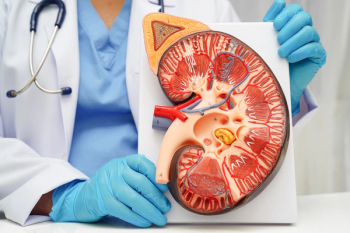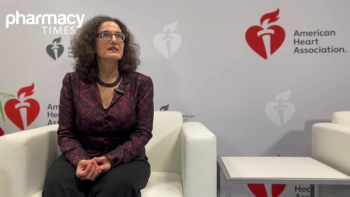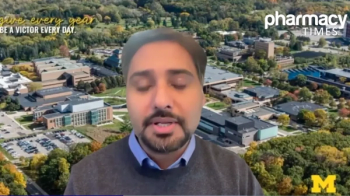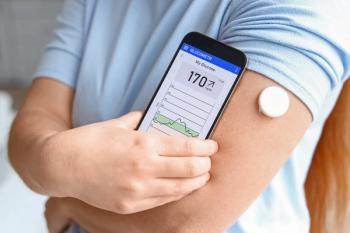
Clinical Overview: Treatments for Tardive Dyskinesia
Tardive dyskinesia is often caused by the use of dopamine receptor blocking agents, most commonly antipsychotics, for at least a few months.
Tardive dyskinesia (TD) is a neurological disorder characterized by involuntary and often irreversible movement of the tongue, lips, jaws, and the extremities. Some of the common TD symptoms include protrusion or twisting of the tongue, lip smacking, puckering, grimacing, and chewing without control.
In severe cases, the respiratory system may also be involved.1 TD impacts approximately 500,000 persons in the United States. Of these, approximately 70% of TD cases are mild and about 3% to 4% are severe.2 In a meta-analysis of approximately 11,000 patients, the mean age for occurrence of TD was around 42 years of age.3
Tardive prefix stems from the Latin word “tardus” which means late/slow. Therefore, TD refers to delayed onset of abnormal involuntary movements. TD is often caused by the use of dopamine receptor blocking agents (DRBA), most commonly antipsychotics, for at least a few months.
Symptoms may also persist after discontinuation of the offending agent.4 First-generation antipsychotics (FGAs) have slightly higher incidence of TD than second-generation antipsychotics (SGAs) because they bind more tightly and for a longer time to the D2 receptors.5
Antipsychotics are used for a variety of indications, including schizophrenia, schizoaffective disorder, bipolar disorder, and depression. DRBAs other than antipsychotics that have been implicated in TD include some antiemetics such as metoclopramide.
Some of the risk factors for TD include:6
- African American race
- Older age
- Early occurrence of extrapyramidal symptoms (EPS)
- Use of FGAs
- High dose/long-term use of antipsychotics
Prevention
Because TD can be irreversible, it is very important to prevent the occurrence. If clinicians are using DRBAs such as antipsychotics, it is recommended to use them at the lowest effective dose and for the shortest duration of time.
In many instances, however, patients may need to take antipsychotics for life to control symptoms such as psychosis. Use of FGA would be preferred over SGA to reduce the risk of EPS and TD.6
Assessing TD
If a clinician suspects TD in a patient who has been exposed to antipsychotics for at least 3 months or more, they may administer a rating scale, such as the Abnormal Involuntary Movement Scale (AIMS). If a patient exhibits moderate to severe symptoms in at least 1 body area or mild symptoms in at least 2 body areas—and other conditions that may contribute to abnormal movement have been excluded—then the patient meets the criteria for probable TD.6
Managing TD
There are several strategies that may be used to manage TD after it has occurred. These strategies include discontinuing the offending agent(s), although this is not always feasible. Other strategies include reducing the antipsychotic dose (if possible), switching from FGA to SGA, and discontinuing anticholinergics, such as benztropine, where possible.
Use of benztropine or diphenhydramine are common in patients taking antipsychotics for prevention or management of EPS. Use of these agents may worsen TD symptoms.6
Two medications under the class of vesicular monoamine transporter 2 (VMAT2) inhibitors have been approved for the treatment of TD. VMAT2 inhibitors mediate the effect of the condition through the reversible inhibition of vesicular monoamine transporter 2, a transporter that regulates monoamines (e.g., dopamine) uptake from the cytoplasm to the pre-synaptic vesicle for storage and release to the synapse.
This results in a decrease in dopamine concentration in the synapse. VMAT2 inhibitors help to resolve TD symptoms by countering the heightened dopaminergic activity that is thought to follow a prolonged dopamine receptor blockade.7
The VMAT2 inhibitors approved by the FDA for the treatment of TD include
Prior to these treatments, there were no FDA-approved medications for TD in the United States. Deutetrabenazine comes in 6, 9, and 12 mg strengths as a tablet form. This medication is dosed twice daily and must be taken with food.8
Unlike deutetrabenazine, valbenazine is dosed once daily in 40, 60, and 80 mg capsules and can be taken without regards to food.9
In summary, TD is an abnormal, involuntary movement typically of the oro-facial area after the use of dopamine receptor blocking agents, such as antipsychotics. The reason that some people experience TD and some don’t are still not clear.
Patients are often embarrassed by TD symptoms in front of others, which can lead to isolation, poor social interactions, and quality of life. It is important to prevent TD in the first place, but if the clinician suspects TD, it is recommended to evaluate the dose and the need for continuation of the offending agent.
References
Tardive Dyskinesia: Definition, Symptoms, Causes, Treatment. webmd.com . Accessed August 8, 2022. https://www.webmd.com/mental-health/tardive-dyskinesiaTardive Dyskinesia Facts and Figures. psychiatrictimes.com. Accessed August 8, 2022. https://www.psychiatrictimes.com/view/tardive-dyskinesia-facts-and-figures- Carbon M, Hsieh C-H, Kane JM, et al. Tardive dyskinesia prevalence in the period of second-generation antipsychotic use: a meta-analysis. J Clin Psychiatry. 2017;78(3):e264-e278
- American Psychiatric Association. Diagnostic and Statistical Manual of Mental Disorders. 5th ed. Washington D.C.: 2013.
- Waln O, Jankovic J. An update on tardive dyskinesia: from phenomenology to treatment. Tremor Other Hyperkinet Mov (N Y). 2013;3:tre-03-161-4138-1. Published 2013 Jul 12. doi:10.7916/D88P5Z71
- Epidemiology, Prevention, and Assessment of Tardive Dyskinesia and Advances in Treatment.
https://www.psychiatrist.com/jcp/psychiatry/epidemiology-prevention-and-assessment-of-td/ . J Clin Psychiatry 2017;78(8):1136-1147.https://doi.org/10.4088/JCP.tv17016ah4c - Jankovic, J. Progress in Parkinson disease and other movement disorders. Nat Rev Neurol 13, 76–78 (2017). https://doi.org/10.1038/nrneurol.2016.204
AUS-44475 AUSTEDO Digital PI and Med Guide v2.ind INGREZZA-full-Prescribing-Information.pdf (neurocrine.com)
Newsletter
Stay informed on drug updates, treatment guidelines, and pharmacy practice trends—subscribe to Pharmacy Times for weekly clinical insights.
















































































































































































































